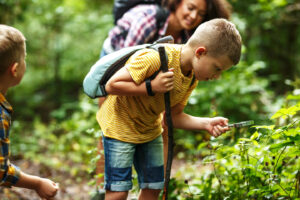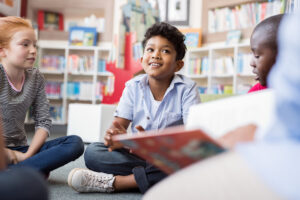Calming Techniques for 2024: Effective Mindfulness Practices for Kids with ADHD
Did you know that over 60% of children with ADHD find daily routines challenging? As we welcome the new year, it’s crucial for parents to have strategies to help their children navigate these challenges. Planning for the entire year can help overcome the unpredictability that often accompanies life with ADHD children.
Each child with ADHD is unique, and what works for one may not work for another. Here are five effective calming strategies to try at home. These activities are designed to equip you for the new year, helping you discover what works best for you and your child.
1. Breathing Exercises
Children with ADHD often struggle with nervous system regulation. Engaging their parasympathetic nervous system through specific exercises can be highly beneficial. These natural methods promote relaxation and reduce stress hormone release, aiding in improved focus and calmness.
- Balloon Breath Exercise: Teach your child to visualize their belly as a balloon. They should imagine inflating the balloon as they inhale slowly through their nose. Then, exhale through their mouth, imagining the balloon deflating.
- The 4-7-8 Technique: Instruct your child to take a deep breath through their nose for 4 counts, hold for 7, and exhale through their mouth for 8 counts.
- Square Breathing: Guide your child to visualize tracing a square as they breathe. Inhale for 4 counts, hold for 4, exhale for 4, and hold for 4, completing the square.
2. Mindful Coloring or Drawing
Engaging in structured and creative activities like coloring and drawing can be soothing for children with ADHD. These activities foster focus and creativity while providing a nonjudgmental outlet for stress and anxiety.
- Painting Patterns or Mandalas: Encourage your child to color each design section mindfully, focusing on their hand movements and the sensation on the paper.
- Guided Drawing: Show them how to draw or color a chosen subject mindfully. They should focus on the colors, shapes, and lines, pausing occasionally to notice their breathing and sensations.
- Feelings Drawing: Have your child use colors to represent different emotions, encouraging them to reflect on their feelings as they color.
3. Progressive Muscle Relaxation (PMR):
Children with ADHD often experience physical restlessness and tension. PMR teaches them to release tension by tensing and relaxing muscle groups systematically. This technique fosters body-mind connection and promotes calmness and emotional regulation.
Steps for PMR:
- Start in a comfortable position and focus on deep, slow breathing.
- Begin with the hands, clenching and releasing the fists.
- Progress through different muscle groups – arms, shoulders, neck, face, abdomen, and legs.
- Emphasize feeling the tension and relaxation in each group.
4. Mindful Walking
Physical activities like walking enhance body awareness and energy regulation. This exercise is especially beneficial for hyperactive children, helping them recognize and address physical discomfort
Guiding a Mindful Walk:
- Walk slowly, focusing on each step and the sensations of the feet touching the ground.
- Maintain a relaxed pace and engage in a walking meditation, focusing on leg movement and breath.
- Introduce a body scan, noticing any areas of tension during the walk.
5. Guided Imagery
Guided imagery leverages imagination and concentration to induce relaxation. It’s an effective method for reducing stress, anxiety, and emotional tension in children.
Practicing Guided Imagery:
- Find a quiet space, close the eyes, and take deep breaths.
- Use a soothing voice to describe a peaceful setting, encouraging the child to visualize the details.
- Guide them through a story, like a journey through a magical forest or a space adventure.
Preparing for the New Year
The start of a new year can feel overwhelming. Engaging in these mindful strategies with your children reduces stress and creates opportunities for meaningful conversations about the upcoming year.
Managing ADHD is a journey that requires patience and understanding. Remember to extend kindness to both you and your child as you navigate these challenges together.
At The Learning Lab, we incorporate mindfulness and calming techniques into our workshops, classes, and tutoring sessions. Contact us to learn more about different ways to support your child in planning for a successful 2024.





